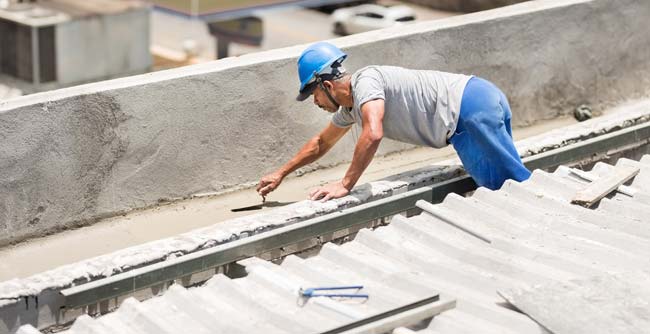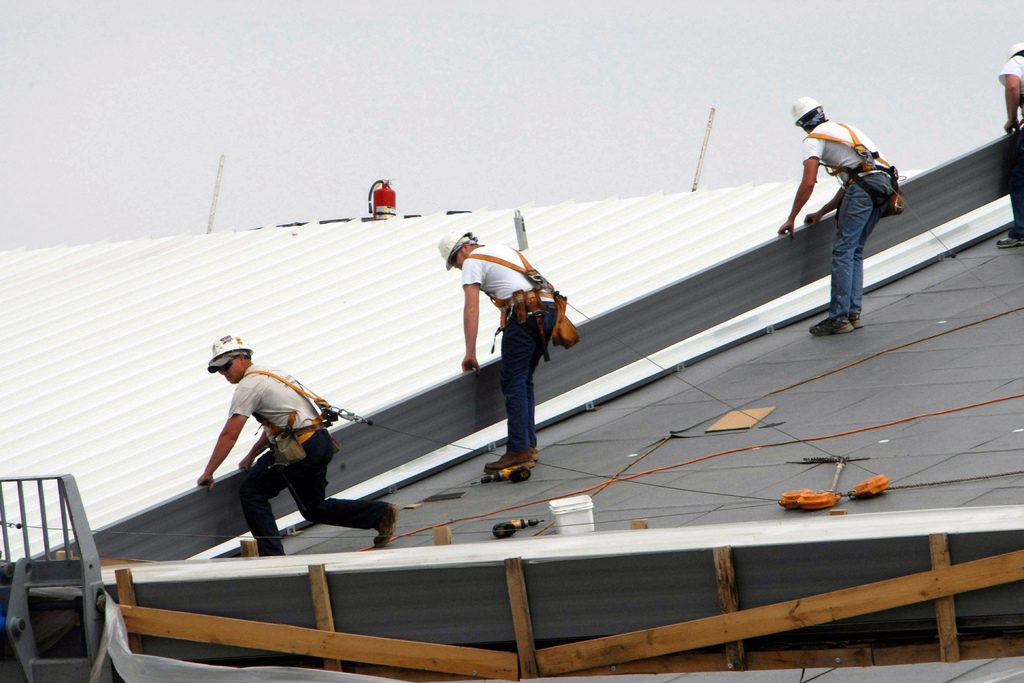Protect your home with the help of a licensed Roofing Contractor for quality workmanship.
How to Evaluate Different Roofing Options for Your Building Needs
Examining roofing alternatives for your building needs a comprehensive technique that considers various elements such as the intended use of the structure, neighborhood environment conditions, and material attributes. It is important to consider the advantages and disadvantages of different roofing kinds, from asphalt tiles to steel and clay tiles, while also considering first expenses and long-term upkeep. In addition, recognizing energy efficiency and aesthetic charm can influence your choice. As you consider these considerations, one inquiry continues to be: which elements will ultimately lead your selection for a lasting and visually pleasing roof covering option?
Assessing Your Structure's Demands
To efficiently examine roofing options, begin by completely analyzing your structure's demands. Beginning by thinking about the structure's planned usage, as different structures might necessitate varying roof requirements. Property roofs frequently prioritize appearances and insulation, while industrial buildings might concentrate on sturdiness and load-bearing capability.
Next, examine the neighborhood climate conditions that will impact roof covering efficiency. Elements such as temperature level fluctuations, precipitation degrees, and wind patterns can influence product choice and design. A roof covering system that masters a temperate environment might not do too in locations vulnerable to hefty snowfall or extreme warm.
Additionally, analyze the architectural stability of your structure. Make sure that the existing structure can support the picked roof products, particularly if thinking about larger options. It is additionally essential to examine any type of local structure codes or laws that might determine specific needs for roof.

Comparing Roofing Materials
When a detailed evaluation of your building's needs has actually been finished, the next step involves contrasting different roofing products. Each product uses unique benefits and downsides, making it necessary to align your selection with your particular needs and situations.
Asphalt roof shingles are widely identified for their price and ease of setup, making them a preferred alternative for residential buildings. On the other hand, steel roof covering, understood for its durability and longevity, can endure severe weather conditions yet may feature a higher preliminary investment.
Clay and concrete floor tiles supply excellent thermal insulation and visual appeal, specifically for Mediterranean-style style, yet they call for an even more robust architectural assistance because of their weight. Wood trembles deal an all-natural look and good insulation buildings however may demand a lot more maintenance and are vulnerable to fire hazards.
Assessing Cost and Budget Plan
Analyzing your roof options requires a careful assessment of expense and spending plan considerations. The overall spending plan for a roofing project makes up several aspects, consisting of material expenses, labor costs, maintenance, and potential lasting savings. It is vital to develop a clear budget before checking out certain roof covering products, as this will certainly lead the decision-making procedure and help you prevent overspending.
Begin by obtaining quotes from several specialists to understand labor prices in your area. Guarantee that these quotes consist of all essential services, such as elimination of the old roof, installment, and any extra functions, like insulation or ventilation renovations - Roofing Contractor. Next, assess the cost of various roof products, taking into consideration both first installment costs and anticipated life-span

Recognizing Energy Efficiency
Power performance plays a vital function in the option of roof covering products and systems, considerably influencing both power intake and general comfort within a structure. An appropriate roofing system can boost reference thermal efficiency, decreasing the need for heating and cooling systems, which subsequently decreases power bills and reduces ecological effect.
When reviewing roof choices, consider products that reflect instead than absorb heat. Additionally, proper insulation and air flow are crucial to optimize the power efficiency of the whole roofing system.
Another important element is the roof's long life and maintenance requirements. Sturdy materials that need much less constant substitute contribute to long-lasting power cost savings. Moreover, the energy effectiveness of a roof can additionally be evaluated via its conformity with recognized sustainability ratings such as ENERGY STAR or LEED.
Taking Into Consideration Visual Appeal
A roofing system's aesthetic appeal considerably influences the general look of a building, enhancing its architectural style and enhancing visual allure. Perrysburg Roofer. When assessing roofing alternatives, it is necessary to consider just how the chosen product, shade, and style will certainly balance with the existing structure and community. A well-designed roofing can elevate even the simplest of structures, changing them right into visual centerpieces
Various roof covering products supply numerous aesthetic top qualities. Traditional roof shingles may stimulate a traditional appeal, while metal roofing can pass on a modern-day, smooth appearance. In addition, the shade of the roof material plays a vital role; lighter tones can make a building show up even more spacious, while darker tones might create a cozier ambiance.
In addition, architectural aspects, such as dormers and eaves, can improve the roof covering's visual effect. It is suggested visit this page to speak with specialist designers or designers to ensure the chosen roofing alternative lines up with the total style intent. Ultimately, a roof should not just supply functional advantages yet additionally add positively to the building's visual, showing the owner's taste and the character of the surrounding environment.
Final thought
